#Surrealist Group of Paris
Explore tagged Tumblr posts
Text






The fifth issue of Alcheringa, the Surrealist Group of Paris's journal, will be on sale June 15, with a launch event to follow on June 23
4 notes
·
View notes
Note
I'm from the USA and am trying to take hope and inspiration from our queer predecessors who faced dark times in the past. How did they keep going even when it felt like the world was ending?Do you have any recommendations for queer historical essays, poems, books, anything to find comfort and hope for these dark times?
Yes, I have a couple of stories for this.
Claude Cahun
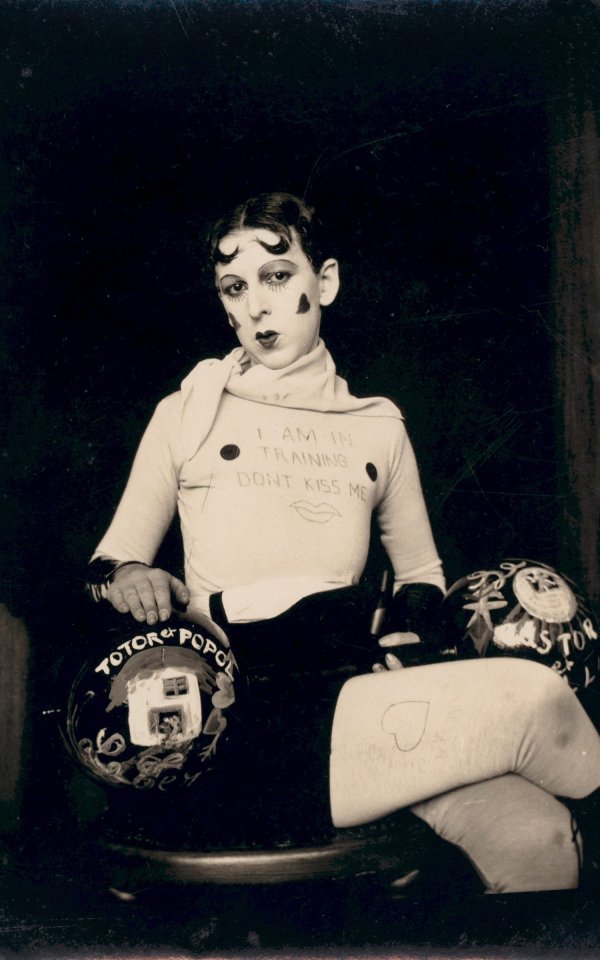
A queer surrealist photographer from 1920's paris, Claude was Jewish and recognized the rise of antisemitism in their home country and watched it become fascism. Here is a quote from their article:
"In 1937 Claude Cahun and Marcel Moore cut off many connections because of the war and ran to Jersey to avoid anti-Semitic violence. Upon arrival, they went back to using their birth names and laid low until the Germans took Jersey. Moore and Cahun set to work. They used their experience with art and disguising their genders to create works that spread misinformation, seeds of rebellion and implied that there was a large-scale resistance happening when in reality, it was just the two of them. Though some of their work was based on confusing the soldiers, they also translated and transcribed BBC transmissions into German, detailing the war crimes that were being committed. They would have these translations on pieces of paper that they would slip into soldier's pockets, matchboxes, and anywhere a soldier may stumble across it and possibly read it. An investigation was started, and Nazi authorities believed there to be a group of people doing this. When the two were discovered to be behind the actions, Claude Cahun and Marcel Moore were sentenced to death. Fortunately, the sentence was never carried out because the island of Jersey was liberated from German rule only a year later. Claude took a picture upon their release in front of the camps with a Nazi eagle pin between their teeth."
And Jarosław Iwaszkiewicz

who wrote:
"Poetry readings and concert attendance—and often a chat over vodka—were not only forms
of escapism, but also a search for better, more substantive aspects of human beings, a search
which would end, more often than not, in complete disillusionment. If it could be possible, to
discern, in these notes even if only for a moment a measure of humanity in that time of
inhumanity, the goal of this publication would be fulfilled.”
I think his whole article is worth reading.
Also here are some books to read:
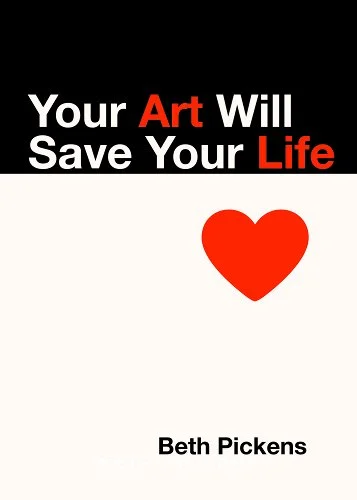
Your Art Will Save Your Life
Beth Pickens

Double Cross: The True Story of the D-Day Spies
Ben MacIntyre
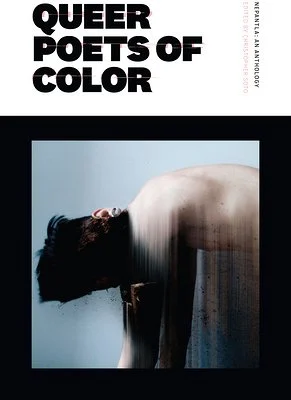
Nepantla: An Anthology Dedicated to Queer Poets of Color
Christopher Soto
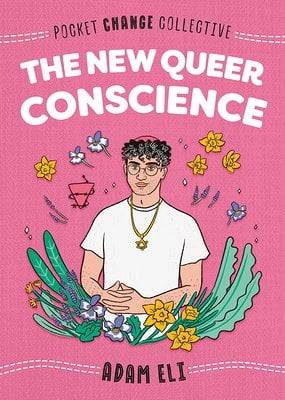
The New Queer Conscience
Adam Eli
(Some of the links are affiliate links)
863 notes
·
View notes
Text

Gherasim LUCA (Bucharest, 1913 - Paris, 1994)
Madeleine, undated, autograph manuscript, images cut from magazines with autograph poem, ms 860
Of Romanian origin, Gherasim Luca established close ties with French artistic circles in the early 1930s, most notably with the Surrealist group, before settling permanently in France in 1953.
Described by Gilles Deleuze as "the greatest poet of the French language", Luca developed a work of "limit-hero", to use the title of one of his works (1953), where the deconstruction of language is based on the refusal of political, identity or ethical categories and the recourse, twenty-five years before Deleuze and Félix Guattari, to the notion of anti-Œdipe. His atypical path, where the creative process is inseparable from his personal life, naturally led him to transpose his poetic experiments into the visual arts. In particular, from 1945 onwards, Luca began a series of collages - in which this autograph manuscript is included - made from photographs of various illustrations or, more importantly, reproductions of paintings, cut into squares of equal dimensions. Luca then glued these squares side by side to form a new, original and surprising image, following a process deeply inspired by the Surrealists. He gave these works the name "cubomania", a way of recalling the founding role of the square shape but also probably a way of mocking the heirs of cubism. Beyond the influence of the Surrealists and Marcel Duchamp's scandalous L.H.O.Q. (Musée National d'Art Moderne, Paris, 1919), Luca's "cubomanias" feature a personal dialogue with the most famous works of art of the past, from Leonardo da Vinci to the van Eyck brothers, Caravaggio and Ingres. This manuscript joins one of them acquired in 2019, Madonna of the Bourmestre Meyer (after Holbein).
83 notes
·
View notes
Text
A list of all the books mentioned in Peter Doherty's journals (and in some interviews/lyrics, too)
Because I just made this list in answer to someone's question on a facebook group, I thought I may as well post it here.
-The Picture of Dorian Gray/The Ballad Of Reading Gaol/Salome/The Happy Prince/The Duchess of Padua, all by Oscar Wilde -The Thief's Journal/Our Lady Of The Flowers/Miracle Of The Rose, all by Jean Genet -A Diamond Guitar by Truman Capote -Mixed Essays by Matthew Arnold -Venus In Furs by Leopold Sacher-Masoch -The Ministry Of Fear by Graham Greene -Brighton Rock by Graham Green -A Season in Hell by Arthur Rimbaud -The Street Of Crocodiles (aka Cinnamon Shops) by Bruno Schulz -Opium: The Diary Of His Cure by Jean Cocteau -The Lost Weekend by Charles Jackson -Howl by Allen Ginsberg -Women In Love by DH Lawrence -The Tempest by William Shakespeare -Trilby by George du Maurier -The Vision Of Jean Genet by Richard Coe -"Literature And The Crisis" by Isaiah Berlin -Le Cid by Pierre Corneille -The Paris Peasant by Louis Aragon -Junky by William S Burroughs -Absolute Beginners by Colin MacInnes -Futz by Rochelle Owens -They Shoot Horses Don't They? by Horace McCoy -"An Inquiry On Love" by La revolution surrealiste magazine -Idea by Michael Drayton -"The Nymph's Reply to The Shepherd" by Sir Walter Raleigh -Hamlet by William Shakespeare -The Silver Shilling/The Old Church Bell/The Snail And The Rose Tree all by Hans Christian Andersen -120 Days Of Sodom by Marquis de Sade -Letters To A Young Poet by Rainer Maria Rilke -Poetics Of Space by Gaston Bachelard -In Favor Of The Sensitive Man and Other Essays by Anais Nin -La Batarde by Violette LeDuc -Lolita by Vladimir Nabokov -Intimate Journals by Charles Baudelaire -Juno And The Paycock by Sean O'Casey -England Is Mine by Michael Bracewell -"The Prelude" by William Wordsworth -Noise: The Political Economy of Music by Jacques Atalli -"Elm" by Sylvia Plath -"I am pleased with my sight..." by Rumi -She Stoops To Conquer by Oliver Goldsmith -Amphitryon by John Dryden -Oscar Wilde by Richard Ellman -The Song Of The South by James Rennell Rodd -In Her Praise by Robert Graves -"For That He Looked Not Upon Her" by George Gascoigne -"Order And Disorder" by Lucy Hutchinson -Man Crazy by Joyce Carol Oates -A Pictorial History Of Sex In The Movies by Jeremy Pascall and Clyde Jeavons -Anarchy State & Utopia by Robert Nozick -"Limbo" by Samuel Taylor Coleridge -Men In Love: Masculinity and Sexuality in the Eighteenth Century by George Haggerty
[arbitrary line break because tumble hates lists apparently]
-Crime And Punishment by Fyodor Dostoevsky -Innocent When You Dream: the Tom Waits Reader -"Identity Card" by Mahmoud Darwish -Ulysses by James Joyce -The Four Quartets poems by TS Eliot -Julius Caesar by William Shakespeare -A'Rebours/Against The Grain by Joris-Karl Huysmans -Prisoner Of Love by Jean Genet -Down And Out In Paris And London by George Orwell -The Man With The Golden Arm by Nelson Algren -Revolutionary Road by Richard Yates -"Epitaph To A Dog" by Lord Byron -Cocaine Nights by JG Ballard -"Not By Bread Alone" by James Terry White -Anecdotes Of The Late Samuel Johnson by Hester Thrale -"The Owl And The Pussycat" by Edward Lear -"Chevaux de bois" by Paul Verlaine -A Strong Song Tows Us: The Life of Basil Bunting by Richard Burton -Don Quixote by Miguel de Cervantes -The Divine Comedy by Dante Alighieri -The Jungle Book by Rudyard Kipling -The Man Who Would Be King by Rudyard Kipling -Ask The Dust by John Frante -On The Trans-Siberian Railways by Blaise Cendrars -The 39 Steps by John Buchan -The Overcoat by Nikolai Gogol -The Government Inspector by Nikolai Gogol -The Iliad by Homer -Heart Of Darkness by Joseph Conrad -The Volunteer by Shane O'Doherty -Twenty Love Poems and A Song Of Despair by Pablo Neruda -"May Banners" by Arthur Rimbaud -Literary Outlaw: The life and times of William S Burroughs by Ted Morgan -The Penguin Dorothy Parker -Smoke by William Faulkner -Hero And Leander by Christopher Marlowe -My Lady Nicotine by JM Barrie -All I Ever Wrote by Ronnie Barker -The Libertine by Stephen Jeffreys -On Murder Considered As One Of The Fine Arts by Thomas de Quincey -The Void Ratio by Shane Levene and Karolina Urbaniak -The Remains Of The Day by Kazuo Ishiguro -Dead Fingers Talk by William S Burroughs -The England's Dreaming Tapes by Jon Savage -London Underworld by Henry Mayhew
115 notes
·
View notes
Text
I'm still thinking about it, so---if you're a local, I highly encourage Rough House Theater's "House of the Exquisite Corpse". It's lovely, arresting, from the performances down to the smallest touches. I still can't get over the ripped umbrellas hanging upside down in dreamlike suspension from the ceiling; the way each "station" is wrapped in plywood and decorated in its own meaningful pattern and design.
But first, let me step back. "House of the Exquisite Corpse" takes its name from the old Surrealist parlor game, at the heart of which is the idea that you can collect a disparate group, then smash their ideas together and create something from the smithereens. This is something like what Rough House has done, which is pick a theme ("Superstition") and then let the artistic groups loose to create short scenes built around that theme.
(I want to call them tableaux, because watching the performances I was struck by how it felt like something out of time---as though we were 17th century courtiers in Paris ushered into a candlelit ballroom, or early 20th century farmers in Minnesota, paying our penny to see what the circus brought to town.)
The set-up itself does a wonderful job ushering you into a time-outside-of-time---you step into a space divided from the rest of the space by black sheets, chunky headsets dangling from wooden ladders suspended just over your head. The emcee is carrying a clipboard and speaks into an old-school broadcasting mic---which you can only hear if you're wearing the headsets.
It is, you'll discover, the central conceit of the performance. From there, you're directed from station to station by silent ushers, carrying flashlights so they can point you forward. Unless you are wearing the headphones at each station, you can only listen to the absent, ambient music echoing around the room.
Not only are the stations set up to wrap you in a specific soundscape, but they play with your vision too---most stations have you peer through holes or cracks in the wall, though one station had us line up in front of mirrors and watch the reflection of the performance, while another station placed shards of glass at every peephole, so you watched the scene and the character's experience of the scene in a strange double-vision. A couple of the stations used tricks of the light---strobe effects that made the puppets' movements seem even more uncanny or imply violence; a haze of smoke or fabric to disguise the human "prowling" in the puppet-shape of a tiger.
(I always like when I can tell an artist is reacting to something I've seen before, and the Rousseau "The Dream" vibes in that scene were exquisite.)
I will say that “A White Bird in the House is an Omen of Death” was my favorite, not in the least because it featured a whole choreographed song (feat. a lovely articulated owl puppet, plus some very effective shadowplay work). However, “Through the Looking Glass” was beautifully up my alley, from the unique staging---this was the station where you watched the performance in a mirror---to the creative puppetry, and a meditation on loveliness that had some bite to it. “Broken Mirror” was more traditional in its puppet work, but it also had the most elaborate staging, a fully-realized world in miniature.
I keep going back to how enormously creative so many of these artists were, in ways I simply can't ignore. “Step on a Crack” didn't necessarily work for me, but I can't stop thinking about it---its trippy setup, the inhuman knit masks the creator used; the spines dangling, neon-colored, from the nearest tree as the protagonist recited lines about loving his mother with increasing, feverish and horrible energy. The glimpses I got during “An ill fate befalls those who pluck from fruit in their dreams” of the puppeteer's face---how she shut her eyes and turned away, as though she too was affected by the puppet's horror.
#I had such a good time. amazing thoughtful intriguing.#also if you're in chicago and interested I get lots of emails from the chicago puppet theater.#I haven't interacted with them a lot but the couple of events I've gone to have been lovely.#I love when people maintain an art for no reason other than desperate passion for it; I think it bleeds through to their work#like the sufjan stevens ballet. or the bands that craft soundtracks to silent movies. or the puppeteer groups who stage horror novellas.#people doing art!!! every time it makes me insane.#city of the big shoulders
48 notes
·
View notes
Text

group of surrealists, Paris France 1933 (photo: Anna Riwkin-Brick)
The picture shows: Paul Eluard, Jean Arp, Yves Tanquy, René Crevel, Tristan Tzara, André Breton, Salvador Dalí, Max Ernst, Man Ray.
33 notes
·
View notes
Text

In this painting, René Magritte does what he does best: he takes our familiar world, breaks it into pieces, and then reassembles it…
As one of the leading figures of the surrealist movement in 1920s Paris, Magritte’s approach mirrors one of the group’s fundamental principles. The surrealist manifesto, a multi-page written declaration drawn up by André Breton in 1924, states their aim was to “liberate the mind by subverting rational thought and giving free reign to the unconscious.”
🖼 René Magritte, “The Blank Signature,” 1965, oil on canvas, 32 x 25 in., Collection of Mr. and Mrs. Paul Mellon #magritte #art #painting
14 notes
·
View notes
Text

Interesting new music to listen to (my recommendations):
“The Player”, Clara Mae: a raw and empowering song, with poetic interludes and aesthetics that flawlessly complement the lyrics.
“My Mother Told Me”, Ekaterina Shelehova: inspired by Russian folk music. The artist deeply touched my heart with her unique, angelic voice.
“Ojos Diamante”, Ximena Sariñana: about encountering hardship in love and wishing to be reassured by looking in one’s partner’s eyes
“Frailty of Nights”, Amr Shalaby: need piano music to loop endlessly? This one, you’ll listen to it on repeat, especially if you’re seeking something calm and majestically beautiful
“Nobody’s soldier”, Hozier: an anti-war song about the violence we’re witnessing from afar while feeling angry and hopeless. The white flag and the child doll in the music video gave me chills.
“luminary rainbows”, ionnalee: to whom it may concern
“Ghost in the Machine”, Raycheal Winters: a lyrical and musical masterpiece, about finding the inner strength to overcome trials and reach self-realization
“My Body’s My Buddy”: about loving and accepting one’s body throughout its changes, for the care, safety and experiences it offers
“Vampires”, Ha Vay: about our obsession with eternal youth, packed with references to fairytales and the fantasy genre
“Grandiose”, Pomme & Ichiko Aoba: the Japanese version of the third track of “les failles”, about wanting to be a mother while questioning if it’s a genuine desire or if it’s largely due to social influences
“Parasite”, Chløë Black: dark feminine energy, hell yeah! And with a pun between “parasites”, “Paris lights” and “Paradise”. Need I say more?
“That’s My Floor”, Magdalena Bay: another banger by this group of two, known for their hypnotic sound, references to Internet culture, surrealist visuals, existential undertones and experimental approach to music
“Dancing With Fire”, Sever the Light: like the title, the song is fire!
“Coloured Concrete”, Nemahsis: crafted with originality and intricate metaphors, this song perfectly captures the feeling of confusion while growing up. It’s the one that I related to the most.
Other songs that I wish I mentioned: Dark Night of the Soul (Simone Simons, ft. Ayreon), Pink Electric Shoes (Parov Stelar), Heartbreak Rodeo (Lily Meola), That’s Life (Luna Li), Eternals (Abstracted Minds), Offerings to the Gods (Othala), Plead (Ashley Kutcher), rush (Marco Luka), Can’t Stop Me Now (KAZIMI), Hung the Moon (Cults), Ethereal (TXMY x Freya Ridings), Thank Goodness (Hope Tala), beautiful girls get the ugliest world (carolesdaughter), Left of Me (Andrea Bejar), Come Alive (Phantogram), Say My Name (Cassyette), Skin & Bones (Silverstein), Drift Slow (Glasser), gonna have to trust you (Stephen Stanley), feelings don’t lie (Ofenbach & salem ilese), Shell of You (Lava La Rue), Another High (Mothica)
#new music#ekaterina shelehova#ximena sariñana#hozier#nobodys soldier#ionnalee#ha vay#pomme#ichiko aoba#magdalena bay#nemahsis#simone simons#parov stelar#luna li#othala#ashley kutcher#cults#freya ridings#hope tala#carolesdaughter#phantogram#cassyette#silverstein#stephen stanley#ofenbach#salem ilese#lava la rue#mothica
8 notes
·
View notes
Text
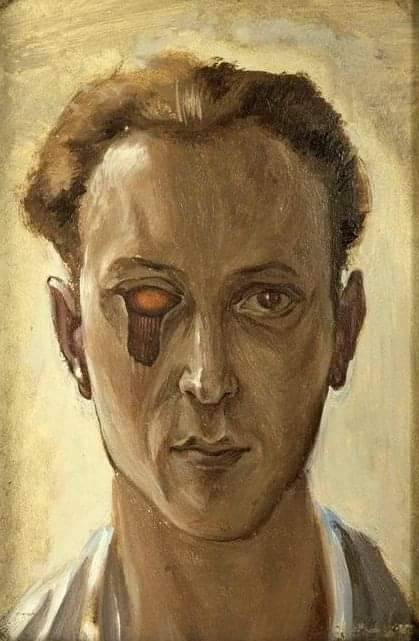
Victor Brauner, Self portrait with Enucleated Eye, 1937
Victor Brauner (1903 - 1966) is the most important painter of the Romanian avant-garde. After his early Impressionist and Expressionist works, he has contributed to every avant-garde movement/group. However, most of his oeuvre fits within Surrealism, Brauner being regarded as one of the major pre- and post-war Surrealist painters.
As early as 1930, Brauner settled in Paris, where he lived in the same building with Yves Tanguy and Alberto Giacometti. In 1935, he returns to Romania for several exhibitions, but in 1938 he returns in France. On the 28th of August, he loses his left eye in a fight, after having painted a few years earlier ”Self-portrait with enucleated eye”. After several large Surrealist exhibitions, in 1966 (the year of his death) he is chosen to represent France at the Venice Biennale.
25 notes
·
View notes
Text
Ideal Life, 1950, Leonor Fini (Buenos Aires 1907 - Paris 1996)

La vida ideal, 1950 Leonor Fini (Buenos Aires 1907 - Paris 1996)
(English / Español)
Talented, glamorous and ambitious, Leonor Fini was one of the most influential female artists of the 1930s. From her opulent, bohemian childhood in Italy to her debut in a group exhibition at the age of seventeen and her rise in the international art world, Fini was legendary for both her vivacious personality and her ethereal subjects. Fini’s figures—sphinxes, felines, nymphs, priestesses, nudes— are bold proclamations of female sexuality that convey a powerful feminine subconscious. Also renowned for her theatrical set-design, costumes and posters, the artist developed close relationships with other avant-garde Surrealists including Andre Breton, Salvador Dali, Man Ray, and Max Ernst, who became her lover.
---------------------------------------------------------------------------
Talentuosa, affascinante e ambiziosa, Leonor Fini è stata una delle artiste più influenti degli anni Trenta. Dall'infanzia opulenta e bohémien in Italia al debutto in una mostra collettiva all'età di diciassette anni, fino all'ascesa nel mondo dell'arte internazionale, Fini è stata leggendaria sia per la sua personalità vivace che per i suoi soggetti eterei. Le figure di Fini - sfingi, felini, ninfe, sacerdotesse, nudi - sono audaci proclamazioni della sessualità femminile che trasmettono un potente subconscio femminile. Rinomata anche per le sue scenografie teatrali, i costumi e i manifesti, l'artista sviluppò stretti rapporti con altri surrealisti d'avanguardia, tra cui Andre Breton, Salvador Dalì, Man Ray e Max Ernst, che divenne suo amante.
Source text: Widewalls
5 notes
·
View notes
Text

Merveilleuse Utopie, an exhibition curated by the Surrealist Group of Paris, will run from July 6 to Sept. 7, 2024 at the Maison Andre Breton in Saint-Cirq-Lapopie, France. A 20-page dossier on the exhibit is available at Venus, d'ailleurs. A catalogue will be available. Artists exhibited:
Juan Andralis, Pedro Azevedo, Jean-Marc Baholet, Hans Bellmer, Jean Benoît, Anny Bonnin, Massimo Borghese, Jean Branciard, Jorge Camacho, Eugenio Castro, Victor Chab, Sylwia Chrostowska, Darnish, W. A. Davison, Adrien Dax, Gabriel Derkevorkian, Mr. Djub, Aube Elléouët-Breton, Tristan Félix, Kathy Fox, Sarah Froidurot, Eugène Gabritschevsky, Antonella Gandini, Roberto García York, Joël Gayraud, Régis Gayraud, Yoan Armand Gil, Jan Giliam, Guy Girard, Alan Glass, Michel Gouéry, Janice Hathaway, S. L. Higgins, Valentine Hugo, Richard Humphry, Ameli Jannarelli, Alex Januario, Bronisław Kurdziel, Le Maréchal, Sergio Lima, Rik Lina, Gina Litherland, Michael Löwy, Mirka Lugosi, Albert Marenčin, Přemysl Martinec, Didier Mazuru, Desmond Morris, David Nadeau, Georges Papazoff, Jean-Pierre Paraggio, Mimi Parent, Kateřina Piňosová, Pierre Rojansky, Penelope Rosemont, Ron Sakolsky, Mitzura Salgian, Bernard Sanschagrin, Jean-Claude Silberman, LaDonna Smith, Dan Stanciu, Wedgwood Steventon, Jan Švankmajer, Ludovic Tac, Virginia Tentindo, Antoine Terrieux, Jean Terrossian, Clovis Trouille, Emiel Verlinde, Olivier Vallet, Sasha Vlad, Susana Wald, John Welson, Frank Wright, Stefan Zekowski, Michel Zimbacca, Unica Zürn...
4 notes
·
View notes
Note
For the Q&A: What's a silly/inconsequential tidbit of queer history you could share? Like Gilbert Baker's favorite dinner, or something like that.
Okay, can I just say Leonor Fini, a great bisexual, polyamourous, surrealist, painter had such an odd but cool life? Here is a quote from her article:
Romantically she would settle down with two men: Polish essayist Konstanty Jeleński and Italian Count Stanislao Lepri, the second of whom would abandon his fascistic diplomatic career in Italy due to Leonor’s influence and become a painter instead. The three would stay together, travelling between a Paris apartment and an abandoned monastery that Leonor remodelled and filled with cats and artwork. Her monastery would build a reputation for parties and hedonistic activities, and her large friend group frequented the location.
Like, I'm sorry, a monastery remodeled to be a home for queer people, hedonism, and cats, what more could I ask for?
170 notes
·
View notes
Text
So TIL Paul wasn't (just) being a weirdo with the polygon line in Hi, Hi, Hi: “I put a line in ‘Hi, Hi, Hi’ where I said, ‘Lie on the bed and get ready for my . . .’ [And I thought] I wonder what I put here?” he explained. “I used a really mad word from a surrealist play by a man called Alfred Jarry, a French playwright who wrote around 1900. He was a real nutter who used to cycle around Paris on his bike, and he used to have this thing called the Pataphysical Society. It was nothing but a drinking club, but to be a Professor of Pataphysics sounds great. I used that term in ‘Maxwell’s Silver Hammer’—‘he studied Pataphysical.’ At any rate, Jarry wrote this theatre sketch called Ubu Cocu, which has this character called Peardrop, who’s always going around worried about his ‘polyhedron.’ So I said, ‘polygon.’” (via The McCartney Legacy)
But also apparently this part of the song got a little extra embellishment: "One other late addition is undocumented, but it is claimed that the group took the sexual theme one step further, overdubbed the pulsing sound of a vibrator after the line 'get you ready for my polygon.'"
Somehow I don't have trouble believing that.
#the mccartney legacy#hi hi hi#french surrealism and sex toys#how else would you follow up Mary Had a Little Lamb?
24 notes
·
View notes
Text

Sonja Ferlov Mancoba (1 November 1911 – 17 December 1984) was a Danish avant-garde sculptor.
She attended the École des Beaux-Arts in Paris. Ferlov Mancoba was trained as a painter. She studied under Bizzie Høyer from 1930 to 1932 and at the Royal Danish Academy of Fine Arts from 1933 to 1935. She debuted at the annual Artists' Autumn Salon (Kunstnernes Efterårsudstilling) in 1935 with two plaster sculptures, Bird with Young and Two Living Beings. From the mid-1930s she was involved with the artists' group and art journal Linien (The Line, 1934–39), which was the first conduit of French Surrealism to Denmark. During this time she was influenced by and an influence on the "abstract-Surrealist" artists and Linien co-founders. via Wikipedia


right: Sonja Ferlov Mancoba. Photo: Museum Jorn.
https://bruun-rasmussen.dk/m/news/sonja-ferlov-mancoba-911-cobra-20221028
2 notes
·
View notes
Text

AI-generated photos
Salvador Dalí goes to Burning Man 2022 [mix w Dali walking his pet anteater in Paris 1969]
Gérard de Nerval – the poet who walked lobsters
Published online by Cambridge University Press: 02 January 2018
Gérard de Nerval, a.k.a. Gerard Labrunie, was born in Paris in 1808. The son of a military doctor in Napoleon's Grande Armée, de Nerval's mother died shortly after his birth.
Though de Nerval would produce his own creative works, he first made his mark at the age of 20 with a heralded translation of Goethe's epic Faust. The young man would undertake other translations, and he has been credited with introducing the poems of Heinrich Heine to French readers.
Concurrent with those endeavours, de Nerval joined a very bohemian peer group consisting of brilliant misfits who together pursued the artificial paradise of hashish.
Though one must be wary of attributing artistic composition to hashish, de Nerval clearly did manifest a strong drive for altered states of consciousness. He kept pursuing an exalted ‘spirit world’ as opposed to the material world he dismissed as a ‘hovel and place of illrepute’ before proclaiming: ‘I am ashamed that God should see me here’.
As part of his preferred ‘spirit world’, de Nerval placed much significance on dreams, a priority which would later find emphasis in the Surrealist movement. Fellow Frenchmen, such as Marcel Proust, have felt his dreamy influence, and T. S. Eliot's groundbreaking Wasteland epic would include the second line of de Nerval's sonnet El Desdichado.
In 1841, de Nerval's world of spirits plunged into disarray when he suffered his first nervous breakdown. He embarked on Les Illuminés, a series of short novels on the theme of mental instability.
Around this time, de Nerval began to acquire quite a reputation for walking a pet lobster on a leash through the Palais Royal Gardens in Paris. ‘I have a liking for lobsters’, he declared. ‘They are peaceful, serious creatures who know the secrets of the sea and don't bark’.
https://www.cambridge.org/core/journals/the-british-journal-of-psychiatry/article/gerard-de-nerval-the-man-who-walked-lobsters/98C72CF8967CC888C62845FCE7E97BA1
https://openart.ai/discovery/sd-1006483461843976333
https://medium.com/@sciencecomedian/salvador-dal%C3%ADs-burning-man-f82a2e67dde9
#ai#burning man#collage#reference#Salvador Dalí#walk#pet#lobster#Gérard de Nerval#Paris#surrealism#research#odd
6 notes
·
View notes
Text
Group Show

Etienne Azambre - The Louvre, 1894
::
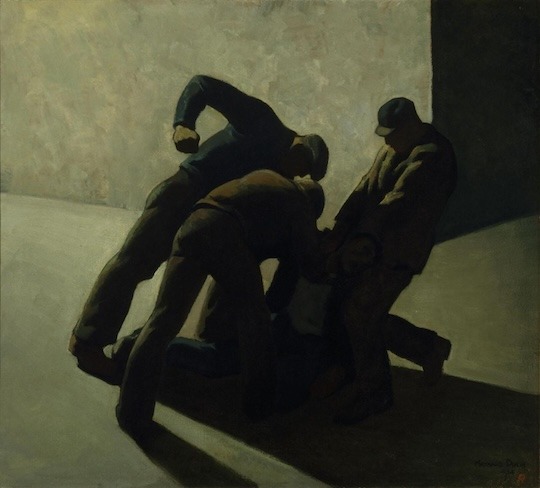
Maynard Dixon - Scab, 1934
::

Henk Jonker - 1955
::
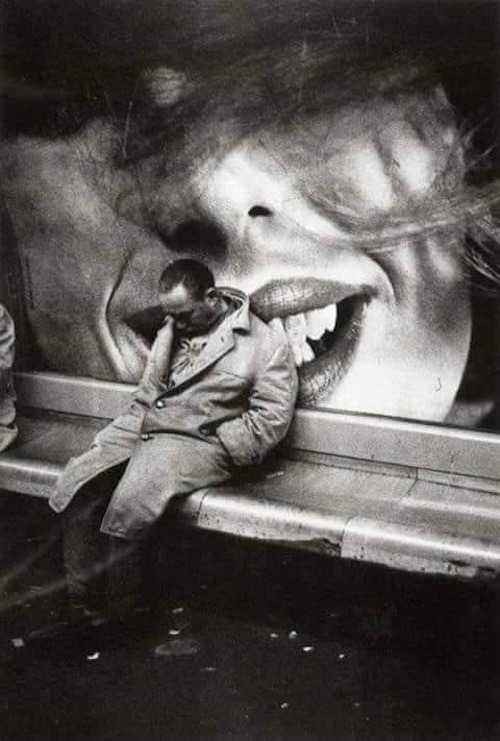
Mario Dondero
::

The Paris surrealists, 1933
::
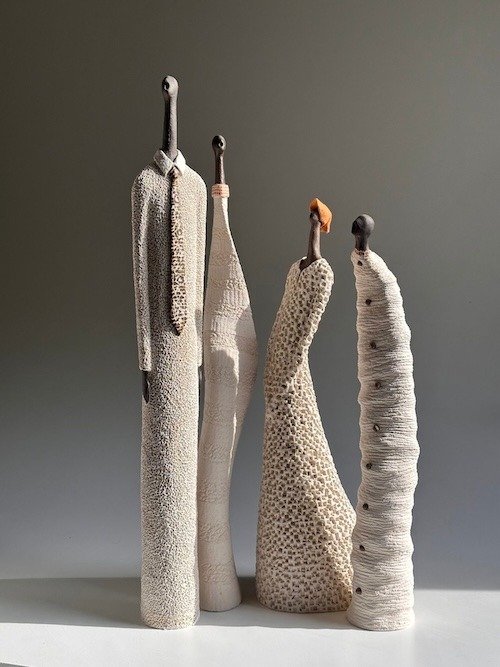
Carlos Cabo
::

Paco Pomet - Dream Team
::

Elliott Erwitt - Pennsylvania Dutch & Adidas, Santa Cruz
::
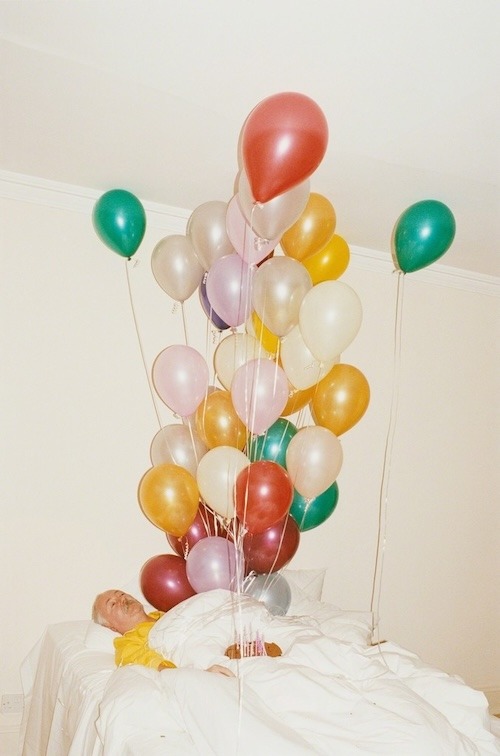
Juergen Teller
::
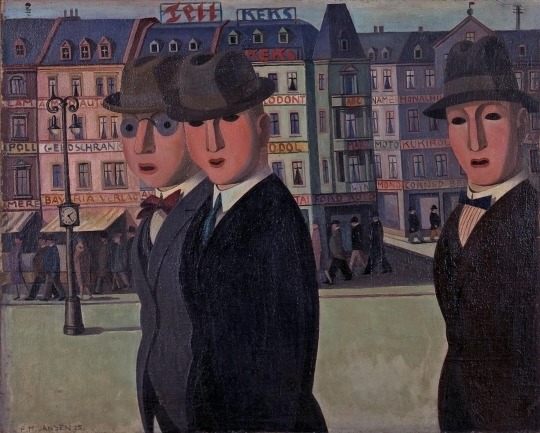
Franz M. Jansen - Promenade, 1925
::

Jan Baptist van der Hulst - William III of the Netherlands and Prince Alexander of the Netherlands
::

Hedda Sterne and the expressionists
::

Misha Gordin
::

Duong Quoc Dinh
::

unknown
::
6 notes
·
View notes